How Dragons Fly: When Biology Trumps Physics

If you’ve ever heard dragons are “too big” to fly…well somebody’s lying.
This July, the Game of Thrones dragon horde (well, three of them) finally makes a long-awaited touchdown onto Westeros, so it’s high time to tackle one of the most-widely debated topics of science-versus-fantasy. Can dragons fly?
And as always…it’s complicated.
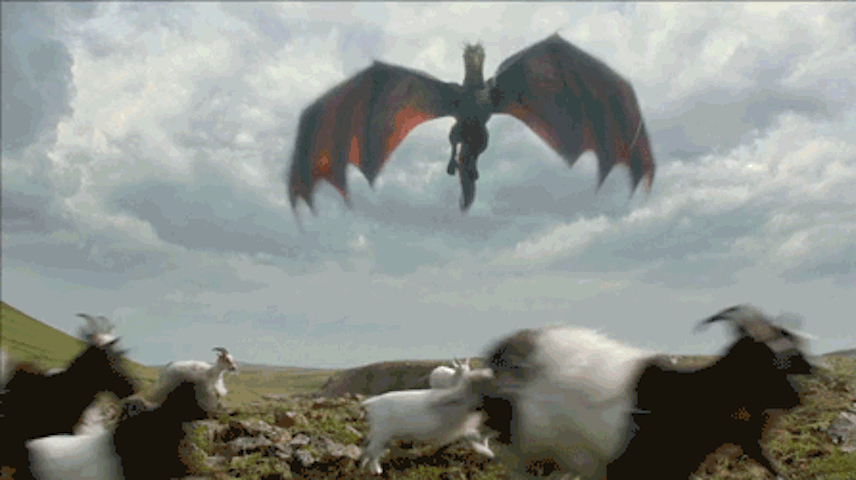
To a surprising amount of science writers, this debate seems like an easy one: “Flying would be out of the question.” That’s an actual quote from an NBC News article from 2015 claiming, among other things, that dragons are simply too big to become airborne. And that’s a common conclusion from dozens and dozens of sources, but in my eyes, this line of thinking is hasty, boring, and frankly unimaginative.
Yes, dragons could indeed take to the skies — the trick is finding out exactly how. That’s where physics comes into play.
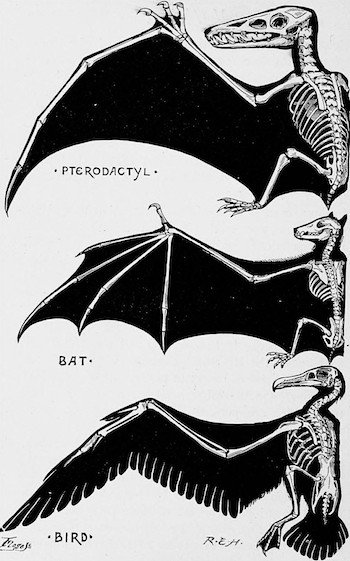
Flight powers, activate!
“Powered flight,” according to Wikipedia, “has evolved unambiguously only four times.” I’m inclined to agree.
And it’s actually very important to think about flight from the evolutionary perspective. This adaptation has time-and-time again arisen in tandem with a different set of traits: mainly the reduction of mass and of body size. And that makes sense, right? It doesn’t take a PhD in mechanical engineering to know that a heavier animal would take more energy to propel itself upwards and off into the sunset.
That PhD would certainly come in handy though. There are a lot of equations needed to understand the physics of aeronautics — every mode of flight (hovering, gliding, takeoff) requires a new set of complex variables, coefficients, and relationships. For the sake of this blog, let’s try and take a simplified approach: bodies that take to the skies, be they animals or myths or airplanes, must generate enough force upward to exceed the effect of gravity on their mass.
I’m going to keep the physics talk to a minimum (😬😬😬) but here’s the gist:
Lots of maths going on here, guys. Stay the course.
This is the induced power (directly proportional to the force required) for a flying body, as put forward in Modelling the Flying Bird by C.J. Pennycuick. To briefly break this down: m is mass, g is gravity, B is wing area, and rho (𝞺) is air density.
Pay attention to mass and wing area for the time being and let’s, finally, start talking about “size.” Yes it does matter.
Behold! Above you’ll see some of the largest known fliers of past, present, and fantasy. See if you can spot the dragons. And take special note of the “theoretical flight limit,” which we’ll get to in a few minutes.
And if you’re interested in seeing how the Game of Thronesdragons compare to other dragons of fantasy, check out this handy chart from the DailyDot (left). Spoiler alert: even across all of dragon-lore these things are huge, which is actually important when we dive into the math.
The larger an animal grows, its wing area (as a flat surface) increases with the square of the animal’s length. Growing a creature n times longer would result in an n^2 increase in wing area. But the animal’s mass is different; assuming density doesn’t change, scaling mass is equivalent to scaling volume, which is a cubic relationship. The animal that’s now n times as long would be n^3 times as heavy. This is known as the square-cube law.
This is where our “theoretical flight limit” becomes relevant. Mathematical models tell us how big a flying animal can grow before it’s size becomes…unsustainable. Researchers have calculated this upper-limit for flying animals at 41kg with a wingspan of 5.1m. Beyond this threshold, larger wings cannot compensate for proportionally massive bodies. This is the backbone for what many scientists say about dragons: they are too heavy, and too big, to obtain powered flight. Dragon’s wings would need to be disproportionately large, or their bodies disproportionately weightless, for them to have any chance of getting airborne.
But hold the phone.
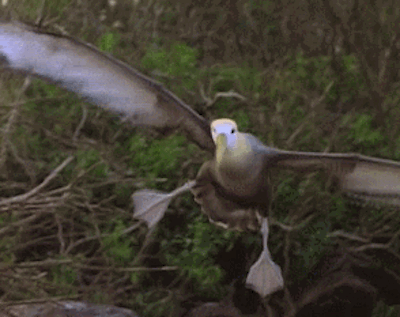
There are real birds alive today like the albatross that push this evolutionary boundary to its limit… and there’s concrete fossil evidence of real (albeit extinct) animals that far exceed these theoretical physical maxima.
Extinct birds like the Pelagornsis sandersi had wingspans over 6m easily, and the genus Argentavishad weight estimates over 70kg. Certain pterosaurs (considered the largest flying animals ever) had wingspans clocking in at 11m. And it’s not just big animals that seem to break the mathematical mold — for decades, scientists considered the mechanics of bumblebee flight as seemingly physically impossible as well.
The physics isn’t wrong, but as per usual, biology doesn’t like to play by the rules.
There are dozens — hundreds — thousands — of external factors that weigh into this can-or-cannot fly equation. For instance, these large seabirds that seem too massive to fly will utilize updrafts (called thermals) to get an added boost upwards. And enormous pterosaurs may have jumped from high perches to propel themselves faster, gaining more horizontal speed that pushed them into the theoretical safezone. There’s also a recurring theory that air density may have been different in the Mesozoic era, making it easier for large creatures to get airborne.
Dragons break the rules too, obviously, the only remaining question is how. My theory actually isn’t a complex one, and it’s something that leverages a well-known and established rule of existing dragon-lore: they’re hot.
And I mean really hot.
“Vhagar was the last of the three dragons that had come to Westeros with Aegon the Conquerer and his sisters, he reminded his lordship. Though slower than she had been a century before, she had grown nigh as large as the Black Dread of old. Her fires burned hot enough to melt stone, and neither Caraxes nor Sheepstealer could match her ferocity.” — The Princess and the Queen
Now this exact temperature depends on the blend of stone, but I’d estimate it’s between 1000 and 1200 degrees Celsius. Dragons are mad hot, and in so, so many ways, this impacts their biology. Including their ability to take to the skies.
First and foremost: weight.

Think about a dragon like a massive, organic, very sophisticated furnace. Given the stone-melting estimates above, dragons could (in theory) heat their internal temperatures to approximately 50-times that of the ambient air, which has a direct effect on air density — approximately 1.2kg/m3 at sea level. The maximum size of a Game of Thrones dragon has been estimated as the size of a Boeing 747 (cargo volume of 159 cubic meters), so plug in some math and to calculate the buoyant force much as you would for a hot air balloonand we can find approximately (yes, this is rough) that a hot-air-dragon could exert a buoyant force of around 585kg.
Not insignificant, even with my brazenly unscientific estimates, but enough to tip the scales? Perhaps.
Let’s assume, for giggles, that not all this heat is perfectly contained. Now there’s another effect to consider: ambient air density. Remember the induced power equation from earlier? Well as external air density decreases — as it would at high temperatures — there’s an inverse relationship on the power generated by flapping wings. Another check in the column for dragons flight.
But all this theorizing comes with downsides too. Another major contributing factor to animal (and aeronautic) flight is lift, calculated from the difference between airflow above and below a wing. Air density, while at first contributing positively to the power generated by a wing, is a critical factor in calculating lift as well — and in this case, lower density reduces the effect that lift has on an airborne body.
And so we spiral downwards into a blackhole of theoretical biomechanics.
The more rules we bend, the more ripple effects those create on the system overall. In fact, the more math I’ve attempted, the more I realize that insanely high temperatures may actually detriment flying ability. Just like my previous article on Game of Thrones life science I actually find myself doubting the very principles I set out to prove. Such is pseudoscience, I suppose.
But there is a more important question at hand: is there any reason to think the above is biologically possible? Lol no.

The closest phenomenon would be in the plant kingdom, actually, found in seaweed that utilize air bladders to increase buoyancy underwater. Actually there are hundreds of marine animals like sharks that artificially increase or decrease buoyancy to navigate horizontally in water columns.
Zero animals use extreme heat to achieve a similar effect, but that doesn’t mean that scientists haven’t considered the idea before. In the Discworld franchise by Terry Pratchett, some dragons obtain flight by propelling fire outwards like a rocket. And actually Carl Sagan proposed an interesting theory of biology in Jupiter’s upper-atmosphere, with animals using lighter-than-air gases to maintain buoyancy in a dense, cloudy environment.
You might disagree, but I find this inspiring.
Scientists and science-writers should step back from looking at fantasy and claiming that certain animals, behaviors, or observations are “scientifically impossible.” Not only does it ruin all the fun, but there’s a deeper issue at hand here. Science should not be viewed as a weapon that kills imagination.

Can science go too far? Can dragons fly? Could mermaids exist? I suppose the answer to each is: yeah maybe. Just as much as science shows us what is real and truthful, it’s also about opening more doors and considering more extreme—even unlikely—possibilities.
cr. Naturalish
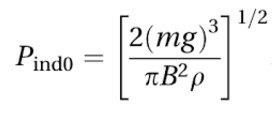
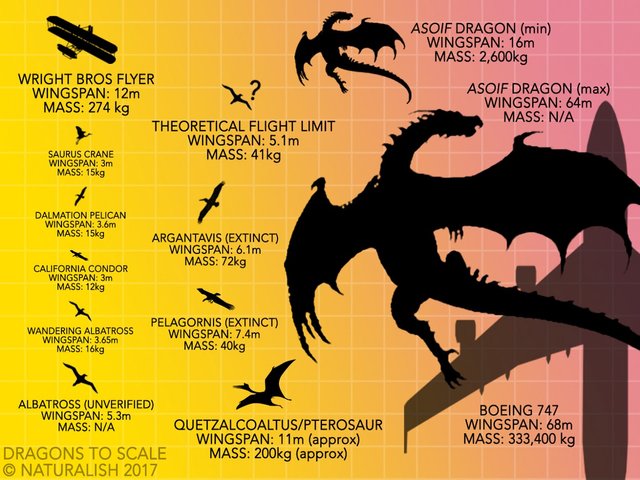
Congratulations @waraphon! You have completed some achievement on Steemit and have been rewarded with new badge(s) :
Click on any badge to view your own Board of Honor on SteemitBoard.
For more information about SteemitBoard, click here
If you no longer want to receive notifications, reply to this comment with the word
STOP